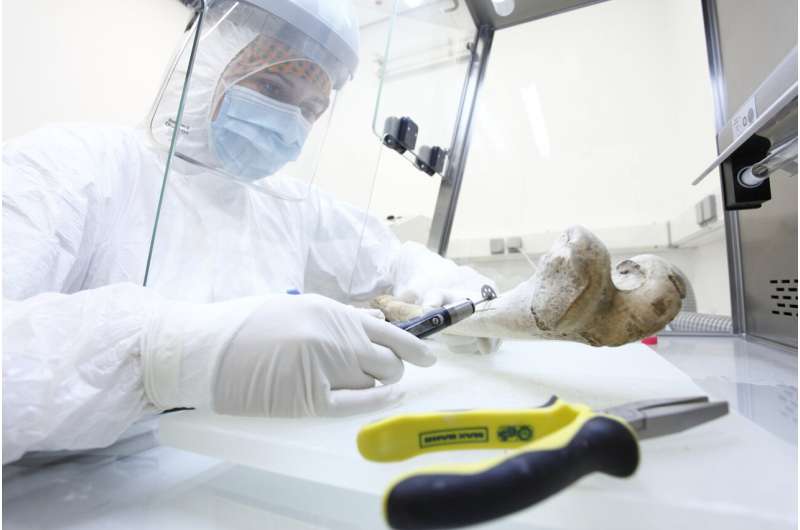High-resolution genomes reveal nuanced origins of the first farmers

Farming has been thought to originate from a single population in Southwest Asia, which covers parts of the modern-day Middle East, and made its way to areas in Turkey, Greece, and eventually across Western Europe. Scientists have long debated how these populations have emerged and flowed throughout these regions, but now an international team of researchers have excavated a trove of new genetic information that may settle the debate. Their findings, presented May 12 in the journal Cell, show that the world's first farmers did not originate from a single group as was previously thought but from the mixing of two groups of hunter-gatherers during a tumultuous time in which human settlements almost went extinct.
"I see the study as the first attempt at demonstrating demographic modeling based on ancient DNA," says senior author and population geneticist Laurent Excoffier of the University of Bern, Switzerland. By sequencing the genome of each ancient human multiple times, a technique called deep sequencing, the research team yielded higher-quality data and much more information than conventional analyses based on shallower or partial sequencing. "We get much more detail about the demographic history of those populations, including population divergence, expansions, and infer admixture dates, which was really impossible to do before."
The ancient DNA-based model, which was refined by additional geographical, cultural, archaeological, and climate data, assumed that about 25,000 years ago, a large initial population split into two groups. One moved to Western Europe, while the other stayed in Southwest Asia. Later, because of the drop in global temperature, the Western group experienced an extreme reduction in its population, where some grew close to extinction. The model explained why descendants of European hunter-gatherers have lower genetic diversity, a question that has long puzzled scientists.
"This is a new finding, and it leads to a different interpretation of how these hunter-gatherer populations were structured socially," says Excoffier. Researchers have thought the groups' small population size was what contributed to their low genetic diversity, but the new evidence showed that their populations were much larger than previously thought. "What it implies to us is that they were perhaps more connected between different groups."
As the temperature fell and rose, the population ebbed and flowed. During warm periods, the populations dispersed, resulting in overlapping territories and admixtures, where individuals from previously isolated groups interbred. The model revealed that some of the first farmers emerged from the admixture of hunter-gatherers from a Western group and an already mixed group living in the east around 12,900 years ago. These farmers who domesticated plants and animals then migrated west, eventually bringing their culture to central Europe. Today, many people from all over Europe have descended from them.
Next, the team plans to further analyze ancient genomes from other geographical sites and times to understand cultures and populations that appeared during different stages of the Stone Age and potentially Bronze Age.
"While our study brought new results about history, I think what it really shows is that it's worth investing in high-quality genomic data," says Excoffier. "These ancient materials are limited and too precious not to be optimally analyzed. We should extract as much information as possible, which will become lasting resources that could be shared."
More information: Laurent? Excoffier, The genomic origins of the world's first farmers, Cell (2022). DOI: 10.1016/j.cell.2022.04.008. www.cell.com/cell/fulltext/S0092-8674(22)00455-X
Journal information: Cell
Provided by Cell Press


















